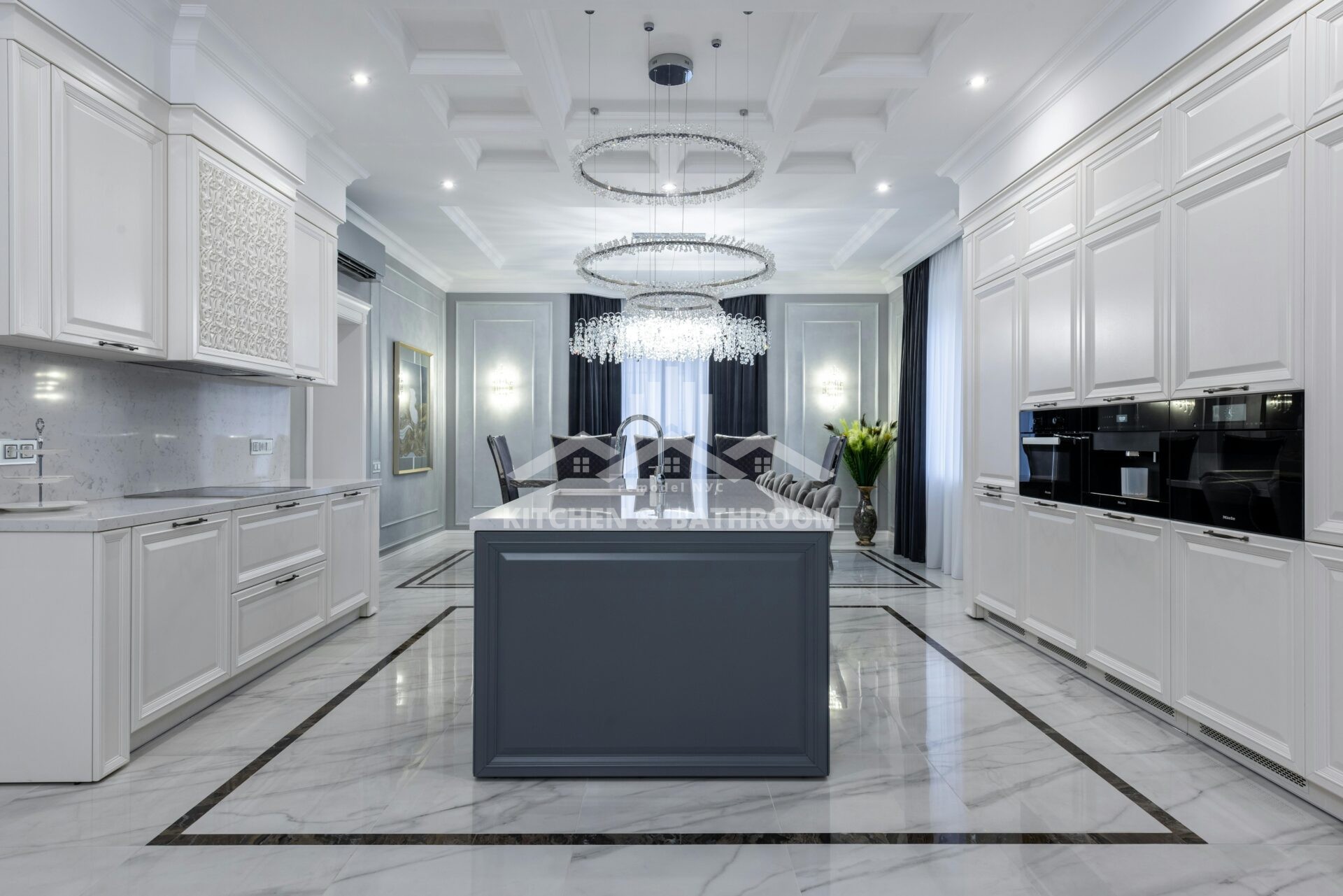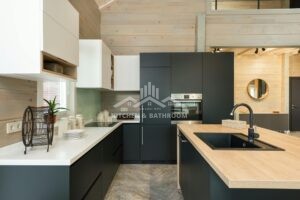
The Ultimate Guide to Lighting Over Kitchen Sink with Window
Lighting Over Kitchen Sink with Window is a crucial aspect of kitchen design that can dramatically enhance both functionality and aesthetics. At Kitchen And Bathroom Remodeling, we understand the importance of creating a well-lit, inviting space where you can cook, clean, and enjoy family time. In this ultimate guide, we will explore various lighting options, offer expert tips, and present creative ideas to help you achieve the perfect balance of natural and artificial light over your kitchen sink with a window. Whether you are renovating your kitchen or simply looking to upgrade your lighting, this guide will provide you with all the information you need to make an informed decision.
How to Perfectly Illuminate Your Kitchen Sink with a Window
Lighting Over Kitchen Sink with Window is a vital element in kitchen design that balances both function and form. At Kitchen And Bathroom Remodeling, we recognize that lighting can transform your kitchen space, enhancing its usability while also contributing to the overall aesthetic appeal. In this comprehensive guide, we will delve into various aspects of lighting over the kitchen sink with a window, from selecting the right fixtures and bulbs to understanding the interplay of natural and artificial light. Whether you are renovating your entire kitchen or simply updating your lighting, this article will provide you with in-depth insights and practical tips to help you make the best choices for your home.
The Importance of Proper Lighting
Proper lighting over the kitchen sink is essential for several reasons. Firstly, it enhances visibility for tasks such as washing dishes, preparing food, and cleaning. A well-lit sink area reduces the risk of accidents and ensures that you can see what you are doing clearly. Secondly, good lighting can significantly improve the ambiance of your kitchen, making it a more pleasant and inviting space to spend time in. Lastly, thoughtful lighting design can highlight the architectural features of your kitchen and complement your overall décor.
Understanding Natural Light
The presence of a window over the kitchen sink introduces natural light into the space, which can be a significant asset. Natural light is not only energy-efficient but also enhances the mood and atmosphere of your kitchen. However, relying solely on natural light can present challenges, such as inadequate lighting during the evening or on cloudy days. Therefore, it is crucial to strike a balance between natural and artificial light to ensure consistent illumination.
Maximizing Natural Light
To maximize the natural light coming through the window, keep the window clean and unobstructed. Avoid heavy curtains or blinds that block light; instead, opt for sheer or light-filtering shades that allow natural light to flow in while providing privacy. Reflective surfaces, such as glossy countertops and backsplashes, can also help to bounce natural light around the room, making the space feel brighter and more open.

Choosing the Right Artificial Lighting
Choosing the Right Artificial Lighting
Artificial lighting is essential to supplement natural light and provide consistent illumination over the kitchen sink. When choosing artificial lighting, consider the type of fixtures, the placement, and the type of bulbs used.
Types of Light Fixtures
Several types of light fixtures are suitable for use over the kitchen sink. Here are some popular options:
Pendant Lights
Pendant lights are a popular choice for kitchen sink lighting due to their versatility and aesthetic appeal. They hang from the ceiling and can be positioned directly over the sink to provide focused task lighting. Pendant lights come in various styles, sizes, and finishes, making it easy to find a design that complements your kitchen décor.
Recessed Lights
Recessed lights, also known as can lights or downlights, are installed into the ceiling, providing a clean and unobtrusive lighting solution. They are ideal for kitchens with low ceilings or for those who prefer a minimalist look. Recessed lights can be positioned strategically to illuminate the sink area effectively.
Under-Cabinet Lights
Under-cabinet lights are installed on the underside of cabinets, providing direct illumination to the countertop and sink area. They are excellent for reducing shadows and enhancing visibility. Under-cabinet lights come in various forms, including strip lights, puck lights, and linear lights, offering flexibility in design and installation.
Selecting the Right Bulbs
The type of bulbs you choose can significantly impact the quality of light in your kitchen. Consider the following factors when selecting bulbs for your kitchen sink lighting:
Color Temperature
Color temperature is measured in Kelvin (K) and indicates the color of the light produced by a bulb. For kitchen lighting, it is recommended to use bulbs with a color temperature between 2700K and 3000K for a warm, inviting ambiance or between 3500K and 4000K for a neutral, bright light that enhances visibility.
Lumens
Lumens measure the amount of light produced by a bulb. For task lighting over the kitchen sink, it is essential to choose bulbs with higher lumens to ensure sufficient illumination. Aim for bulbs that provide at least 800 to 1000 lumens for optimal visibility.
Energy Efficiency
Energy-efficient bulbs, such as LED bulbs, are a great choice for kitchen lighting. They consume less electricity, produce less heat, and have a longer lifespan compared to traditional incandescent bulbs. Additionally, LED bulbs are available in various color temperatures and lumens, providing flexibility in design.

Combining Natural and Artificial Light
Combining Natural and Artificial Light
To create a harmonious lighting design, it is essential to combine natural and artificial light effectively. Here are some tips for achieving a balanced lighting scheme:
Layered Lighting
Layered lighting involves using multiple light sources at different levels to create a well-lit and visually appealing space. In addition to the primary light fixture over the sink, consider incorporating ambient, task, and accent lighting throughout the kitchen. This approach ensures that the entire room is adequately illuminated while allowing you to adjust the lighting to suit different activities and moods.
Dimmers and Controls
Installing dimmer switches and smart lighting controls can enhance the functionality and flexibility of your kitchen lighting. Dimmers allow you to adjust the brightness of the lights to match the time of day or the task at hand. Smart lighting systems enable you to control your lights remotely, set schedules, and create customized lighting scenes, providing convenience and energy savings.
Reflective Surfaces and Light Colors
Using reflective surfaces and light colors in your kitchen can amplify the effect of both natural and artificial light. Light-colored walls, countertops, and cabinetry can help to bounce light around the room, making it feel brighter and more spacious. Similarly, reflective surfaces, such as stainless steel appliances and glass backsplashes, can enhance the overall illumination.
Trends in Kitchen Sink Lighting
Keeping up with the latest trends in kitchen sink lighting can inspire you to create a modern and stylish kitchen. Here are some current trends to consider:
Industrial-Style Lighting
Industrial-style lighting fixtures, characterized by their raw and rugged appearance, are becoming increasingly popular in kitchen design. Pendant lights with exposed bulbs, metal shades, and vintage-inspired designs can add a touch of industrial charm to your kitchen while providing effective task lighting over the sink.
Minimalist Designs
Minimalist lighting fixtures, with their clean lines and simple forms, are ideal for contemporary kitchens. Recessed lights, sleek pendant lights, and under-cabinet lights with a minimalist aesthetic can create a streamlined and uncluttered look while ensuring adequate illumination.
Statement Lighting
Statement lighting fixtures serve as both functional light sources and decorative elements. Large, eye-catching pendant lights or chandeliers can become focal points in your kitchen, adding visual interest and personality to the space. When choosing statement lighting, consider the scale and proportion of the fixture in relation to your kitchen size and layout.
Practical Tips for Installation
Proper installation is crucial to ensure that your kitchen sink lighting is both effective and safe. Here are some practical tips to keep in mind:
Height and Placement
The height and placement of your light fixtures play a significant role in their effectiveness. For pendant lights, the bottom of the fixture should typically hang 30 to 36 inches above the countertop to provide adequate task lighting without obstructing your view. Recessed lights should be spaced evenly and positioned directly above the sink for optimal illumination.
Electrical Considerations
If you are installing new light fixtures or updating existing ones, it is essential to consider the electrical requirements. Ensure that the fixtures are compatible with your electrical system and that the wiring is up to code. If you are not comfortable with electrical work, it is advisable to hire a licensed electrician to handle the installation.
Safety and Compliance
Safety should always be a priority when installing kitchen lighting. Use fixtures that are rated for damp or wet locations, especially if they will be exposed to moisture from the sink or window. Additionally, make sure that the fixtures are securely mounted and that the electrical connections are properly insulated to prevent any risk of electrical shock or fire.
Customizing Your Lighting Design
Every kitchen is unique, and your lighting design should reflect your personal style and preferences. Here are some ideas for customizing your kitchen sink lighting:
Mixing and Matching Fixtures
Mixing and matching different types of light fixtures can create a dynamic and personalized lighting scheme. For example, you can combine pendant lights with under-cabinet lights to achieve layered lighting, or pair industrial-style fixtures with modern minimalist designs for an eclectic look.
Coordinating with Décor
Your lighting fixtures should complement your overall kitchen décor. Consider the finishes, colors, and styles of your fixtures in relation to your cabinetry, countertops, and hardware. Coordinating your lighting with your décor can create a cohesive and harmonious design.
Personal Touches
Adding personal touches to your lighting design can make your kitchen feel more inviting and reflective of your personality. Consider incorporating decorative elements, such as custom light shades, colored bulbs, or artistic fixtures, to add a unique and personal touch to your kitchen sink lighting.
FAQ’s Lighting Over Kitchen Sink with Window
What are lights over the kitchen sink called?
A sconce is an excellent option for lighting over the sink, providing both functional and decorative illumination. If your kitchen already has ample task lighting, sconces can add a touch of style and enhance the overall ambiance. Depending on your ceiling height and kitchen layout, you can choose between pendant lights or sconces, especially if your sink is positioned against a wall. Sconces can effectively direct light over the sink, ensuring you have the necessary visibility for your kitchen tasks.
Where should kitchen sink lights be placed?
Achieving the right proportions is crucial for both the appearance and functionality of your kitchen lighting. Ideally, there should be a distance of 30-40 inches between the bottom of the light fixture and the countertop. For ceilings that are eight feet high, pendants should be hung approximately 12-20 inches below the ceiling. This ensures that the lighting is both effective and aesthetically pleasing.
What is the trend in kitchen lighting?
A leading trend in modern kitchen design is the use of mini pendants arranged in rows over kitchen islands or bars, offering a stylish alternative to traditional island lighting. With a vast array of pendant styles available, the possibilities are endless. Additionally, under-cabinet lights serve as your secret weapon in kitchen lighting, providing essential illumination and enhancing the overall functionality and ambiance of your space.
What to hang over a kitchen sink?
If a window view of nature isn’t an option while doing dishes, consider bringing a touch of greenery indoors with potted or hanging plants. Whether you choose sprawling vines, succulents, or low-light herbs, these plants will infuse life and energy into the space above your kitchen sink, creating a more vibrant and inviting atmosphere.
What lights look best in a kitchen?
For a sleek and contemporary aesthetic, recessed LED lights are an excellent option. They integrate seamlessly into the ceiling, providing ambient lighting without disrupting the clean lines of your kitchen. Use recessed LED lights in combination with other fixtures to create layered lighting effects and highlight specific areas, enhancing both the functionality and visual appeal of your kitchen.
Conclusion
Lighting Over Kitchen Sink with Window is a critical aspect of kitchen design that can significantly enhance both functionality and aesthetics. At Kitchen And Bathroom Remodeling, we are committed to helping you create a well-lit and inviting kitchen that meets your needs and reflects your style. By understanding the importance of proper lighting, maximizing natural light, choosing the right artificial lighting, and customizing your design, you can achieve the perfect balance of light in your kitchen.
Whether you are embarking on a full kitchen renovation or simply updating your lighting, we hope that this ultimate guide has provided you with valuable insights and inspiration. Remember, the key to successful kitchen lighting is to create a harmonious blend of natural and artificial light that enhances the overall ambiance and functionality of your space. With thoughtful planning and careful selection of fixtures and bulbs, you can transform your kitchen into a bright, beautiful, and efficient space that you and your family will enjoy for years to come.